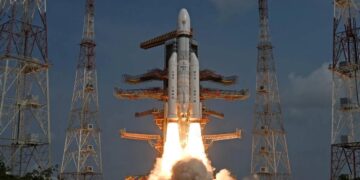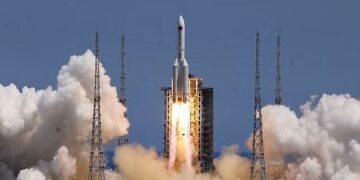Japan Moon lander mission , which aimed to rebound from recent setbacks in the country’s space program, successfully launched on Thursday, September 7th. This mission is significant as only the United States, Russia, China, and, more recently, India have achieved successful Moon landings. Japan faced challenges with two previous failed lunar missions, one publicly funded and the other privately financed.
The launch of the H-IIA rocket took place from Tanegashima, a southern island in Japan. The rocket transported a lander known as “SLIM” (Smart Lander for Investigating Moon), and experts anticipate it will make a lunar surface touchdown in early 2024. The event was watched by around 35,000 viewers online.
Mission control erupted in cheers and applause as the “SLIM” Moon probe and the XRISM space research satellite, developed in collaboration with the US and European space agencies, separated from the rocket. The launch had faced multiple delays due to unfavorable weather conditions.
The Nickname “Moon Sniper”
The nickname “Moon Sniper” for SLIM reflects its precision landing capabilities, as its design aims to achieve a landing within 100 meters of a specific target on the Moon’s surface, which represents a considerable improvement over the typical landing range of several kilometers. Moreover, Japan’s space agency, JAXA, emphasized that this achievement represents a significant step towards landing on less hospitable celestial bodies.
In fact, JAXA stated, “By creating the SLIM lander, humans will make a qualitative shift towards being able to land where we want and not just where it is easy to land,” underlining that this capability would extend to even more resource-scarce planets than the Moon.
This Japan moon lander mission is particularly groundbreaking because, globally, there have been no previous instances of pinpoint landings on celestial bodies with significant gravity, such as the Moon.
Simultaneously, XRISM’s high-resolution X-ray spectroscopic observations will significantly contribute to the study of mass flows and hot gas plasma winds that traverse the universe, thereby providing valuable insights into these phenomena.















































